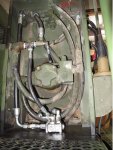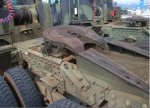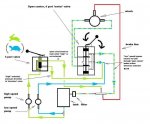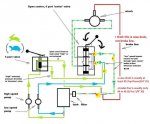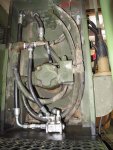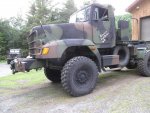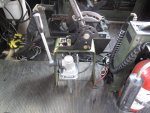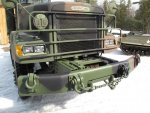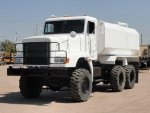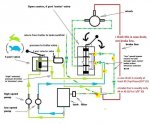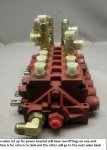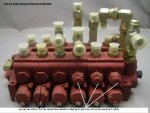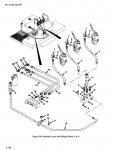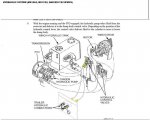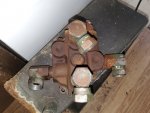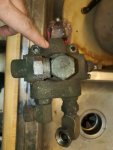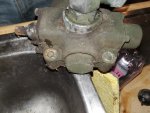- 1,671
- 894
- 113
- Location
- Central NY
Further to these threads:
http://www.steelsoldiers.com/showthread.php?127106-M916A1-Little-Stuff
http://www.steelsoldiers.com/showthread.php?123032-M916A1-w-w
I wanted to fully understand the schematics of the PTO hyd/winch system with the plan to add the A3 wetline kit for trailer hydraulics.
It appears that the direction valve is a spool type - 'motor' or open center and the speed valve adds high speed to the low speed rather than changing to high speed. This is done by simply doubling the volume - a both pumps are 20 Gpm (DS Edit - post #13)
I am not totally aufait with hydraulics - so I stand corrected. PLEASE CORRECT IF APPROPRIATE!
Plan is to add 't's to the low speed circuit, then running just two lines to the bulkhead below the winch - see A3 pic.
John's added front winch would have had to have an additional motor valve with four lines similar to the existing direction valve (P T A B - pump, tank and two reversible flow lines to the winch motor).
NB - 916 (std system), A1/A2 electric idle control, A3 added wetline.
http://www.steelsoldiers.com/showthread.php?127106-M916A1-Little-Stuff
http://www.steelsoldiers.com/showthread.php?123032-M916A1-w-w
I wanted to fully understand the schematics of the PTO hyd/winch system with the plan to add the A3 wetline kit for trailer hydraulics.
It appears that the direction valve is a spool type - 'motor' or open center and the speed valve adds high speed to the low speed rather than changing to high speed. This is done by simply doubling the volume - a both pumps are 20 Gpm (DS Edit - post #13)
I am not totally aufait with hydraulics - so I stand corrected. PLEASE CORRECT IF APPROPRIATE!
Plan is to add 't's to the low speed circuit, then running just two lines to the bulkhead below the winch - see A3 pic.
John's added front winch would have had to have an additional motor valve with four lines similar to the existing direction valve (P T A B - pump, tank and two reversible flow lines to the winch motor).
NB - 916 (std system), A1/A2 electric idle control, A3 added wetline.
Attachments
-
76.3 KB Views: 113
-
61.5 KB Views: 128
-
63.6 KB Views: 110
Last edited:



